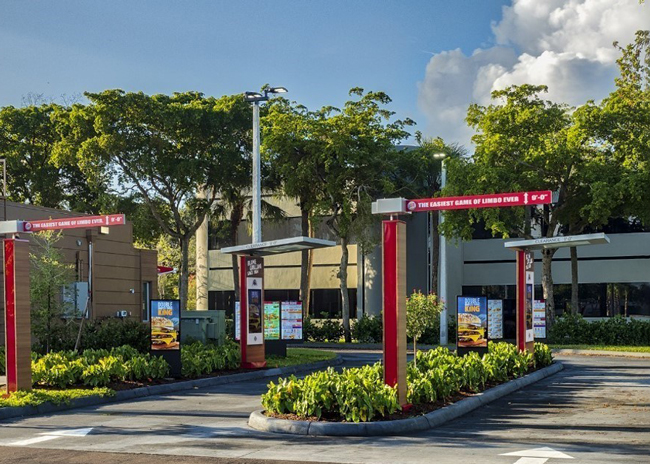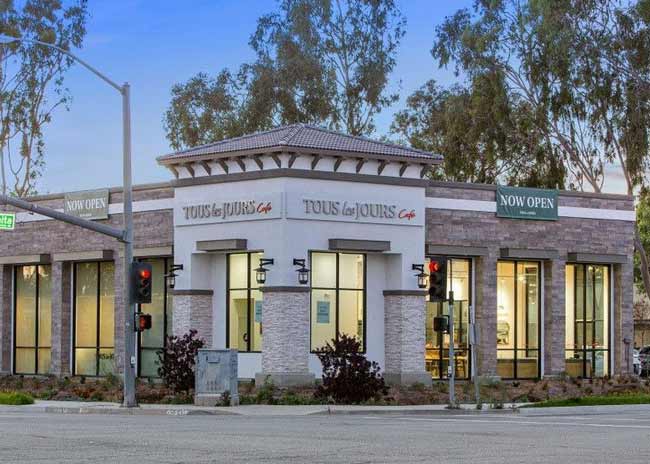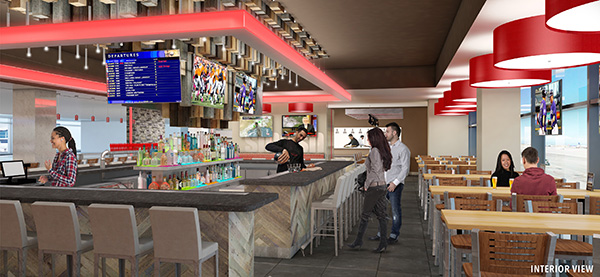Restaurant Brands International Inc. will modernize its drive-thru experience at more than 10,000 Burger King and Tim Hortons locations. The company’s Popeyes chain will begin its own rollout later this year.
The initiative includes the installation of more than 40,000 digital screens with predictive selling technology, integration with restaurant loyalty programs and the ability for remote, contactless payment.
“Our guests have sought out our drive-thru lanes for our iconic food and beverages throughout the COVID-19 pandemic — even in the face of mandated dining room closures around the world,” says Jose Cil, CEO of RBI. “We believe strongly that it is time to modernize our drive-thru lanes throughout the U.S. and Canada to provide even better, quicker and contactless service for our guests. This includes presenting menu options on digital screens that are tailored for each guest, as well as integrating our loyalty program at the moment of ordering and providing remote, contactless payment to speed up our drive-thru lanes in the near future.”
The digital drive-thru menu boards are designed with a proprietary predictive selling technology designed by RBI’s in-house Guest Intelligence team, allowing for special promotions to be tailored based on previous orders, regional weather patterns, the time of day and other factors. This technology can dynamically learn preferred ordering habits and also show the latest and trending menu items. The RBI Guest Intelligence team will continue to refine the technology to further enhance guests' ordering experience as they move forward, per a release.
Designed with the ability to integrate loyalty programs, the menu boards allow for customized menu options to be displayed that are based on the guest’s favorite purchases and redemption history. This functionality is currently live and being tested at 30 locations in Canada with the Tims Rewards loyalty program. All digital drive-thru menu boards in the US and Canada have been designed to accommodate loyalty integration via scanning, Bluetooth or near-field communication.
The digital drive-thru menu boards also have the flexibility to add immediate, remote contactless payment to allow guests to order and pay simultaneously to speed up drive-thru lanes. The first prototype is operational at a Tim Hortons restaurant in Canada, with 15 more locations set to test this functionality by January 2021.
The new installations use enclosures designed to withstand the heat of the southern United States, the cold of Canada's north and the corrosive, salty air from cities along North America’s oceans. The enclosures are IP56 certified, meaning they are fully waterproof and can sustain continuous water pressure, even from waterjets. RBI will retrofit existing installations to this level of protection to ensure the long-term integrity of this guest touch point, per a release.
A typical drive-thru lane includes four digital screens, while double drive-thru lanes typically include a total of seven digital screens. The outdoor-rated 46-inch screens are clustered together, redundantly, for high-availability, which means that if any one of the four digital screens in a standard drive-thru loses communication with its primary media player, the secondary media player will take over and ensure that content continues to be displayed correctly.
As of September, Tim Hortons installed digital drive-thru menu boards at approximately 800 locations in the U.S. and Canada. Burger King installed digital drive-thru menu boards at more than 1,500 locations in the U.S.
RBI continues to assess drive-thru locations and, where possible, is installing double drive-thru lanes to increase capacity and efficiency at our restaurants, per a release.




